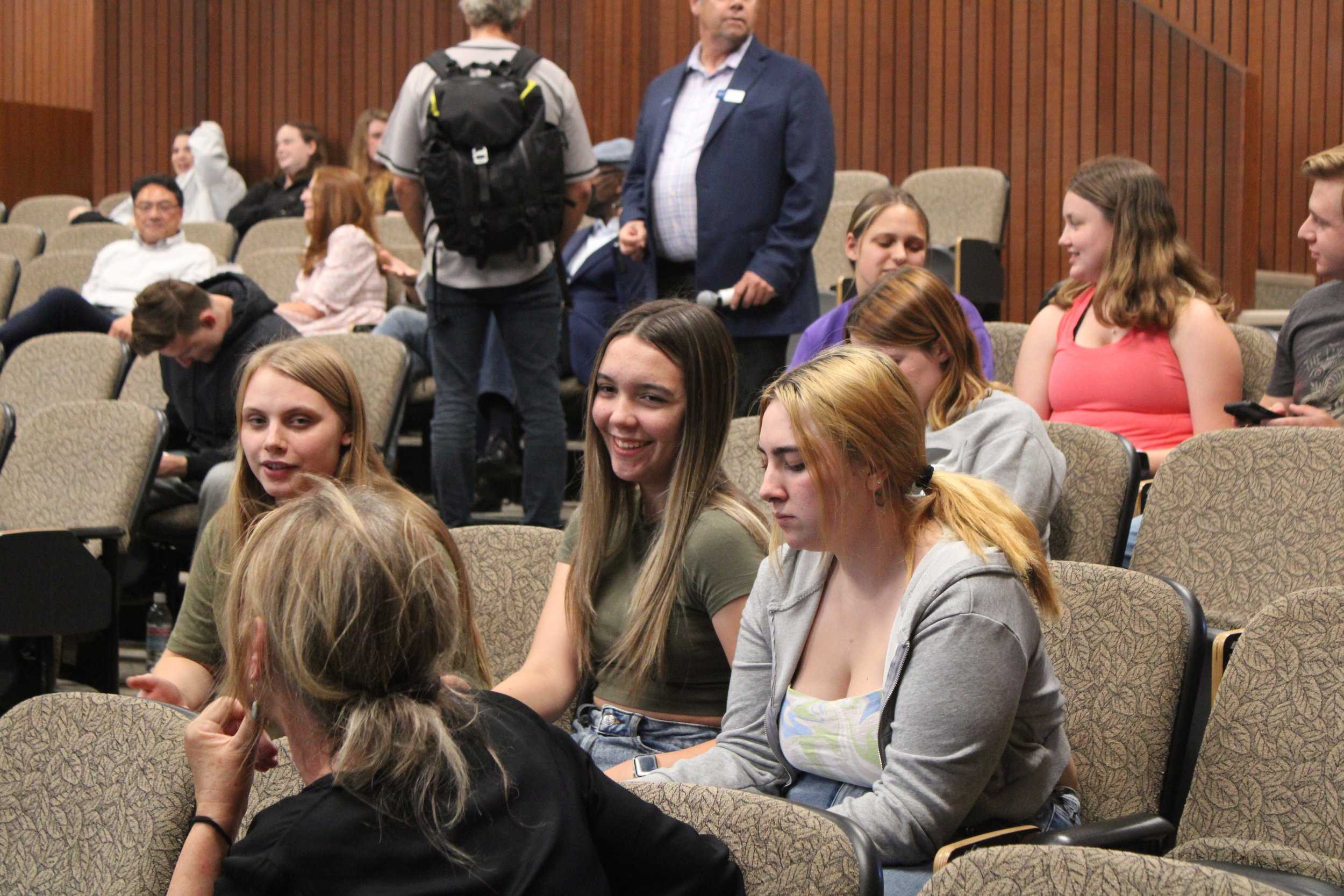STAR // Cec Fernandez
Students wait in anticipation to see the film being presented by Pablo Miralles, say ‘Hi’ to President Lee in the background.
A high school who’s alumni list consists of: Jackie Robinson, a fortune 500 CEO, the lead singer of Van Halen, and many other accomplished individuals across all fields and of all races, should be recognized as one of the very best in the country. Blasphemously, this is not the case, for John Muir High School, in Pasadena, CA. John Muir High and Sonoma State alum, Pablo Miralles, shed light onto why this is, in his documentary “Can We All Get Along? The Segregation of John Muir High School. On Thursday, Sept. 29, at 6 p.m. in Ives Hall, the School of Arts & Humanities gave students the opportunity to watch the documentary and participate in a Q&A with Miralles. Students were given the unique chance to learn about a problem that needs attention, and talk about it with the very person bringing it to light.
The School of Arts & Humanities puts on many events designed to help students “ignite lifelong passions,” one of the main goals of the school, according to its webpage, which can be accessed through sonoma.edu. Having graduated from the Hutchins program here at SSU, it was easy to see that Miralles’ passion to shed light on this subject had not only been ignited, but was burning strong. After the showing, he stuck around and participated in a nearly hour long Q&A with students, faculty and guests to take a further dive into the topics of the film.
The documentary itself focused on the gradual resegregation of public school’s like Muir, following the passing of Proposition 13 in 1978, which capped property taxes, and redistributed school funding. Miralles’ perspective was a unique one for students to hear since he attended Muir during its peak years of integration, and has slowly seen its population become less and less diverse, with a consistently increasing percentage of minorities, which has unfairly lead to a low rating for the school on sites like publicschoolreview.com. Sites like this have furthered the issue because parents see the rating, assume the school is bad, and don’t even take a tour.
The perspective was driven home in a story Miralles shared during the Q&A portion: “There’s a woman that started a national group called ‘Integrated Schools’…she bought a house in Highland Park, in Northeast Los Angeles County, probably about 90% or more latino. A white lady across the street came over and said ‘where are you going to send your kids?’ And she said ‘oh what about the school down the street’ and the lady replied with ‘oh nobody sends their children there.’”
Miralles continued by saying this stood out as odd to the lady because she had recently driven past the school and seen many children out playing. The reason the neighbor said this was because the children playing were predominantly black and latino. This showcases how racial stereotypes have unfairly ruined the reputations of many public schools.
Senior Vasti Guzman who was there for extra credit for a sociology class said “now I see how it all started,” when asked about the changes in public schools. She continued by emphasizing “it made me think what does diversity really mean? Because I thought having black, brown and asian people was being diverse, but the film talked about how when the schools had more black and brown students they were less diverse. So for it to be a more accurate definition you need all kinds of people.”
With Sonoma State being a fairly diverse campus itself, this was a unique experience that opens the door to many possible discussions. Anyone who wants to view the film can do so on pbs.org.




































